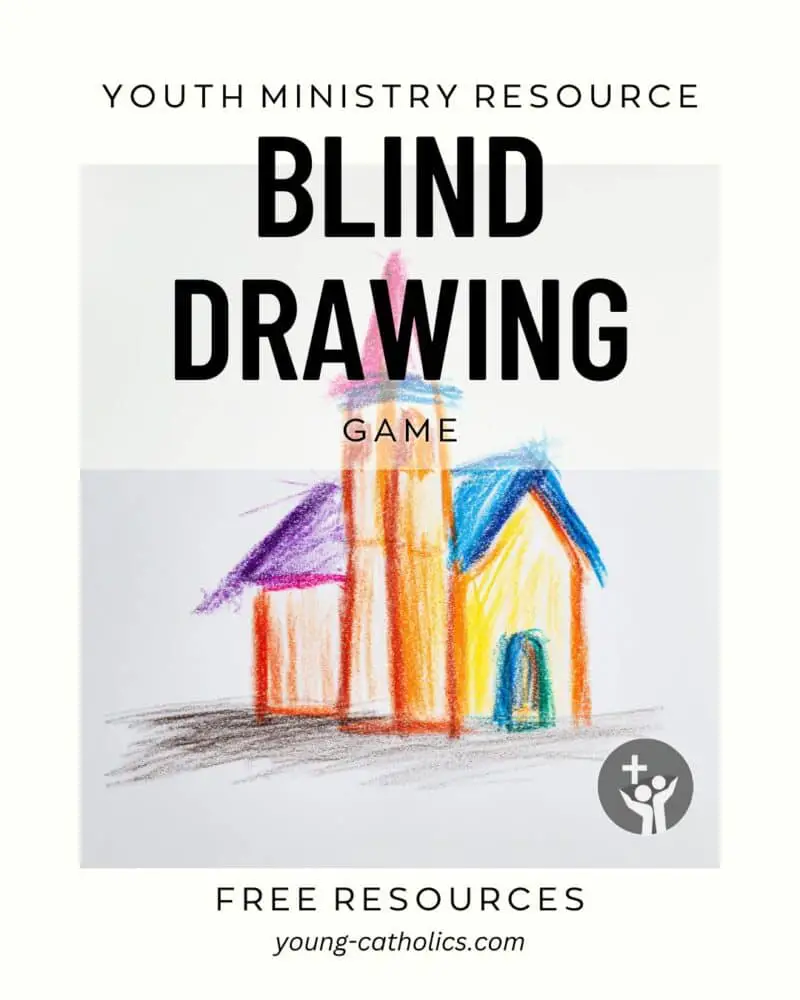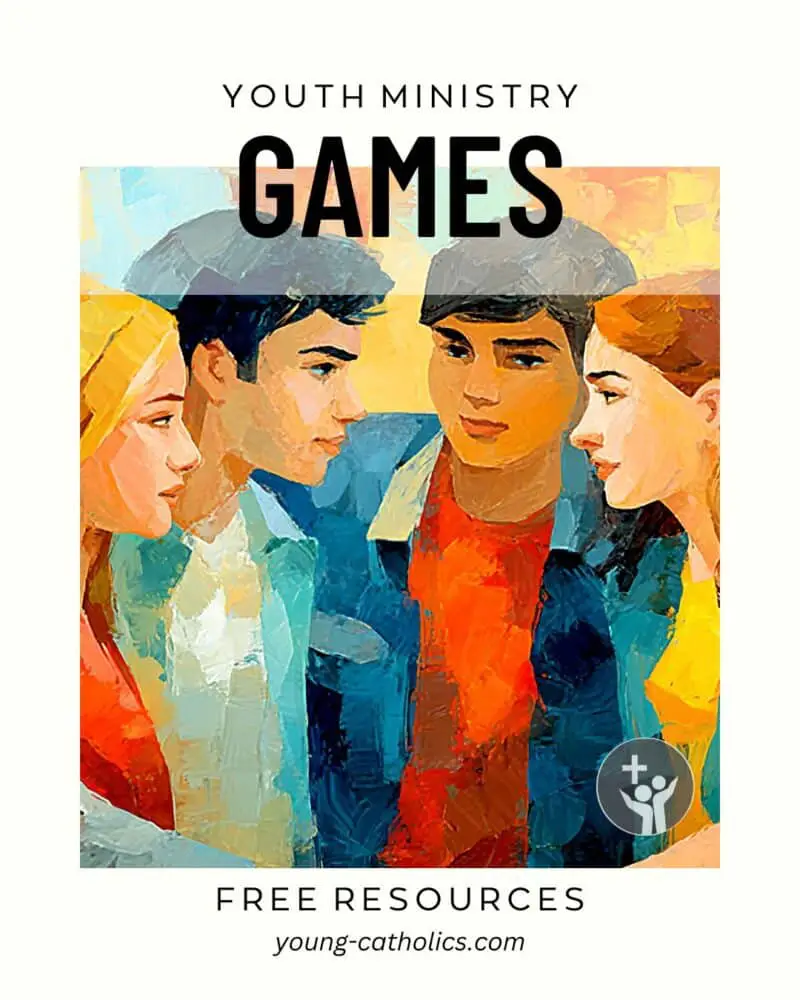Blind Drawing Game

Communication is not always easy. Even when we think we are being clear, others might hear something different. Blind Drawing helps youth see how hard it can be to share ideas without clear words. It shows how important listening and asking questions really are. In this fun and silly game, young people get a chance to practice these skills while laughing together.
This game works well with middle school and high school youth. It helps them grow in teamwork and patience. The describer has to stay calm and give clear directions. The drawer has to listen closely and ask for help when something is not clear. These are great habits for any group or team, whether at school, home, or parish life.
Blind Drawing also connects with our faith life. The Church teaches that we are the Body of Christ. We are called to work together and care for each other. Games like this remind us that we are not alone. We need one another to grow, to learn, and to understand. We build strong relationships through respect and clear communication.
Youth leaders can use this game to teach about trust, respect, and the need for clarity. After the game, talk with the group about what helped or got in the way. Let them share what they learned about listening, speaking, and working with others. These small lessons in a game can carry into prayer, study, service, and daily life.
God Said What Now
This game shows how hard it is to follow directions when you cannot see clearly. That reminds us of the story of the blind man Bartimaeus. He could not see, but he still called out to Jesus in faith. Sometimes we feel like that too. We do not see the whole picture, but we try to follow the voice of the Lord. Blind Drawing helps youth think about how they listen and respond, even when they are unsure.
It also connects to the story of Samuel. When he heard God calling, he didn’t know who was speaking. He needed help from Eli to understand the voice. In Blind Drawing, the drawer needs help to make sense of what the describer is saying. This shows how listening with care and asking questions helps us grow in faith and understanding.
Another strong theme is trust in God’s word. In the story of Abraham, God asked him to go to a new land without showing him the full plan. Abraham listened and followed. In the game, the drawer must trust the describer’s words without seeing the picture. It helps youth feel what it’s like to move forward without all the answers. This can lead to a good talk about faith and trust in our lives.
In youth ministry, this game gives leaders a fun way to start a deep conversation. It sets up real examples of confusion, trust, listening, and responding. It prepares youth to see how their own lives are shaped by God’s voice. Even if they don’t always understand right away, they can keep listening and trying. Just like in the game.
How to Play Blind Drawing
Materials (per pair):
- 1 sheet of paper
- 1 set of crayons or markers
- 1 printed photo or picture (simple images work best)
Setup Instructions:
- Divide the group into pairs.
- Have each pair sit back-to-back.
- Give the drawer a sheet of paper and some crayons or markers.
- Give the describer a printed photo or picture.
- Make sure the drawer cannot see the picture.
Game Play Instructions:
- Set a timer for five minutes.
- The describer tells the drawer what to draw using only shapes, sizes, and colors.
- The describer cannot name objects. For example, they can say, “Draw a big blue circle,” but not “Draw the moon.”
- The drawer listens carefully and asks questions if they need help.
- When the time is up, have each pair look at the picture and the drawing.
- Let the group share their results and reactions.
Notes and Variations:
- Remind describers to speak clearly and slowly.
- Encourage drawers to ask for help if confused.
- Try switching roles and playing again.
- For a fun twist, use silly or abstract pictures.
- Make sure no one uses markers on furniture or walls.
- If using this game with younger children, have an adult help with setup.
Resources

More Youth Ministry Games
The Blind Drawing game is a fun way to help youth learn about trust, listening, and giving clear directions. It gets everyone laughing while also teaching good lessons. This simple activity works well for small or large groups. It fits into many themes for youth ministry.
Looking for more ideas like the Blind Drawing game? Visit our youth ministry games page. You’ll find other fun games that build faith, encourage friendship, and keep everyone active. These games are great for youth group nights, retreats, or classroom settings.
Questions and Answers for the Blind Drawing Game
What is the Blind Drawing game?
The Blind Drawing game is an activity where one person gives directions while the other draws without seeing the picture. It teaches listening and clear communication.
How many people can play the Blind Drawing game?
You need pairs of two people. You can have as many pairs as you want.
What age group is the Blind Drawing game best for?
The Blind Drawing game works best for middle school and high school youth. Younger kids can play too with some help.
What supplies do I need for the Blind Drawing game?
Each pair needs a sheet of paper, crayons or markers, and a picture to describe.
Can we use this game for a lesson?
Yes. The Blind Drawing game can help teach about trust, listening, and how we follow God’s voice, even when we don’t see clearly.
Can we change the rules a little?
Yes. You can try using silly pictures or give less time to make it harder. Just keep the main idea the same.
Now That Looks Nothing Like a Fried Egg
The Blind Drawing game may seem silly at first, but it helps young people grow in real ways. It gets them thinking about how they talk and how they listen. It helps them notice when they assume others understand what they mean. This is something many of us struggle with, even as adults.
The game also shows how hard it can be to follow when you do not see the full picture. This connects with how we follow God. We do not always understand what God wants right away, but we listen and keep trying. The Blind Drawing game gives a fun way to explore that lesson.
Most of all, this game builds relationships. It helps youth learn to trust others and ask questions. It opens the door for deeper talks about faith and how we treat others. And it all starts with a marker, a sheet of paper, and a few laughs.
Your Turn
Try the Blind Drawing game with your youth group or class. It works with many themes and can fit into a short activity or a longer lesson. You don’t need much to get started, and the results are always fun.
Did you try it already? Share your version in the comment section. Let us know what worked, what was hard, or what made everyone laugh. We’d love to hear how you used the game and any creative twists you added.



Leave a Reply